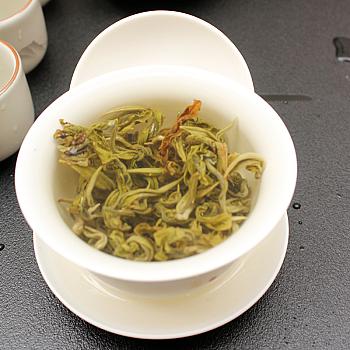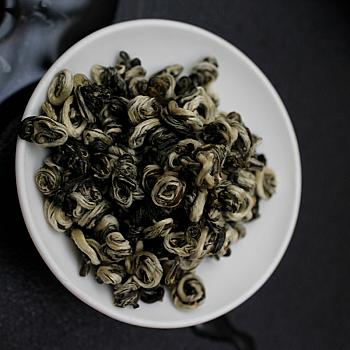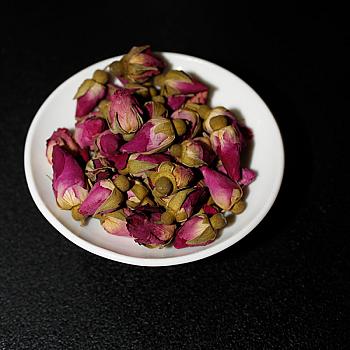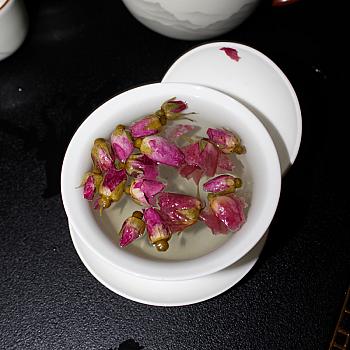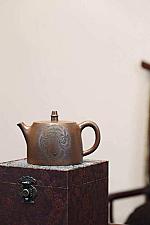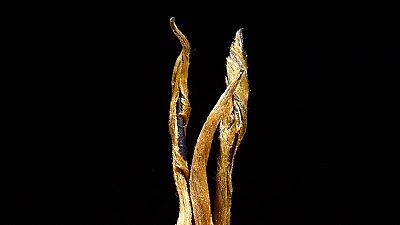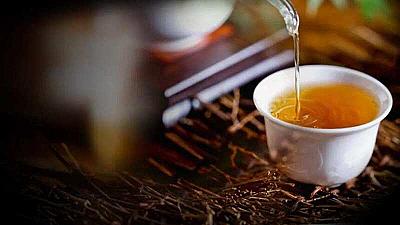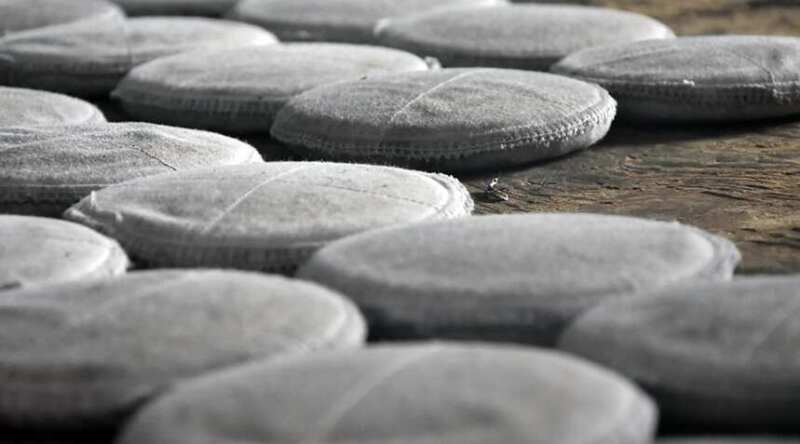
The absurd tea-drinking period for Pu-erh tea!
August 14, 2025
When it comes to Pu'er tea, "the older the better" is often mentioned. We won't discuss whether this phrase is accurate or not. But one thing can be confirmed: consumers perceive that Pu'er tea undergoes a transformation with increased storage time. What's called the "best-drinking period", can be reasonably explained as the tea undergoing a transformation to become suitable for drinking with increased storage time.
Mentioning Pu'er tea inevitably raises "the older the storager."
We will not discuss whether this term is strict or correct, but we can be sure that consumers' cognition of Pu'er tea: Pu'er tea changes with the increase in storage time!
What is called "prime drinking period", a reasonable interpretation is: Pu-erh tea with the storage time increases, convert to an appropriate stage of drinking products.

This sentence looks strict and can't be picked apart, but in fact, there are holes everywhere. We just think about it for a while, and we can ask a bunch of questions like:
How many years does it take for wine to reach its prime drinking age?
2. Is the drinking period similar to "fruit ripening", must be a certain specific time node, advanced nodes will feel "raw", delayed nodes will be like fruit and become "rotten"?
Now, tea enthusiasts have some inventory in hand. Do you know that tea storage experience: even if the storage period is shortened to one year, there will be good and bad times to drink tea within a year. If the storage period is shortened to one day, the tea drinking experience at dawn is better than midday, so how do we determine when the suitable drinking time of a tea arrives? What method should we use to determine it?
4. Is the "adequate drinking time" a fixed time period or different periods of time?
5. Those with some understanding of Pu-erh tea should be aware that good pu-erh has three key elements: materials, processing and storage. However the problem is, all three are very uncertain, so how can we determine the appropriate drinking period?
I don't see any text. Please provide the text you would like me to translate into English.

I. Must Pu'er tea be stored for over 20 years before it can be consumed?
It's actually related to the tradition of drinking old tea.
Most tea enthusiasts with a little knowledge of Pu-erh tea would know that Yunnan old tree tea was only gradually recognized by everyone after 2007, while before that it was the domain of old tea, and the tradition of drinking old tea originated in Hong Kong and developed in Taiwan.
The early system for old tea's value is: store new tea, drink old tea; drink mature tea, store fresh tea, taste old tea.
In the eyes of an old tea connoisseur, a vintage tea is at least 20 years old before it reaches its "drinkable" stage.

As far as I know, Pu'er tea in its mainstream consumption market of Hong Kong is a daily beverage. Daily beverages can reveal many important information:
Ordinary businessmen have two reasons: one thinks old tea is not valuable; second, lack of awareness about storing tea. Third, there's no reason or motivation to store tea because in the land-scarce Hong Kong, many times the cost of storing tea leaves exceeds its value itself.
So even if stored, it's natural storage, pay attention that it's in Hong Kong natural storage, which is what tea friends often heard as "wet warehouse" tea (dry warehouse tea starts from 88 green).
In a high-temperature and high-humidity storage environment, tea stored for one or two years, two to three years will lose its original delicate floral aroma and rich flavor layers. It is indeed necessary to store old tea for 20 to 30 years before it reaches the optimal drinking period, that is, when you drink old tea, you can enjoy the flavors of aged tea, such as mellowed fruit fragrance, wooden aroma, etc.
We have conducted experiments with Pu'er tea left to age naturally for three years in Menghai and Kunming simultaneously. The tea leaves stored in Menghai had a thicker, smoother soup than those stored in Kunming, but the aroma was greatly affected. However, the aged Pu'er tea stored in Kunming for three years had richer aromatic layers and more complex flavors.
So Pu-erh tea has to be stored for twenty years or more before the so-called "drinking period" arrives, which is only a product of its age. Hard to believe.

2, drinking period may be a fallacy!
The title only represents a personal point of view, and it is not just meaningless nonsense, but listen as I tell you in detail:
First, if "stored for twenty years, thirty years" in the preceding paragraph is not the final result of Pu-erh's "best-drinking period", what is the standard for the drinking period?
Secondly, after decades of practicing tea-making, I have some confidence in what I do, as mentioned earlier:
Even if the storage period is reduced to one year, tea in a year has good and bad drinking times; reduce it to one day, tea also has better taste experience at dawn and dusk than noon. So how do you determine when a tea's suitable drinking time appears? How to judge?
Thirdly, for a tea with an identified good direction of conversion (i.e., no issues with raw material, process or storage), I believe that if there is a drinking period, it will have multiple periods. In other words:
1. Some tea will come into the first drinking time after storing for several months, and after one year it will come into the second time, and after three years five years it will come into the third time...
2. The time it takes for different products to come of age is different, some are early and some are late, which is related to the tea leaves and processing techniques used.
Yunnan has tea resources in 11 prefectures and cities, the geographical environment, ecology, tea varieties, techniques are different, so the speed of coming into being fast or slow is normal.

Fourthly, determine whether the tea leaves have reached the suitable drinking period, in essence it should return to tasting, namely a tea connoisseur, his tasting standard (drinking system) needs to be online, can judge whether this tea's transformation is healthy or not, and this point many tea makers also find hard to do!
Fifth, I think instead of discussing the shelf life of one tea, we should discuss the storage and conversion of tea leaves.

Three, a brief discussion of the "suitable drinking period" for Lincang tea and Yiwu tea.
Since I have had more contact with Yunnan tea and Pu-erh tea, I will just briefly discuss the topic of "drinking period" for these two types.
The controversy surrounding Yunnan tea is relatively large.
Most of the collectors of Pu'er tea, old tea people and even professionals in the industry all believe that Lincang tea without old tea as a backing has small space for conversion later on, new tea tastes good, but old tea soup will become thin.
To answer this question, I must give an objective expression of my own view:
Lincang tea has no old tea as its endorsement, and is not tolerant of conversion, with small space for later conversion, this idea is problematic.
There are fewer and fewer people drinking tea in the market now. The current market has a small space for tea from Lincang to be converted into new tea, and it tastes better; the more it's stored, the thinner it becomes, which is an objective fact.
Firstly, the tea on this peak has been developed for over a decade now. Even if it's not more than 20 years from now, but relatively old products are already in stock. From the perspective of storage, even personal contact with older (after 2006) and well-stored Lincang tea does not exist phenomena such as no conversion, broth feeling thin etc.
The second point is that the tea in Liming has a small late conversion space, the main reason why new tea tastes good and becomes thinner as time goes on is "technology". Now the mainstream tea technology of mountain tea is to make the new tea taste good, debut at its peak.

Most of the well-known teas like Longjing, Tieguanyin and Wuyi are all processed at the source. Tea farmers do not have a concept of storing tea, as they always aim for better sales. Therefore, they will definitely tend to process new tea as it is more refreshing. The most common way to process tea is to make green tea (high-temperature killing), red tea (over-withering) or yellow tea (fermentation).
There's not much to say about the Yiwu tea, just want to share some small knowledge points with everyone:
1. The more excellent the original material and process of Ancient Wild Tea, the less rich its flavor will be when it's just made; sometimes almost tasteless, while similar to tree tea or small-leafed tea, their flavors and aromas are richer, with differences in throat resonance and tea aroma.
In general, the optimal drinking period of young and small-leaf varieties is faster than that of large-leaved varieties. The ancient trees in the area of Xiyue direction will definitely appear a state where flavor, aroma, and aftertaste are all excellent within half a year; the aged tea in the Xiyue direction, stored for about 3 years, will reach its small peak in thickness of soup, tea fragrance, and aroma.

Four, some small suggestions on storing tea at home.
1. It's not recommended to buy tea for investment purposes with the intention of selling it later;
2. The fundamental principle of storing tea still hinges on having a solid ability to appraise tea's quality, and if one can grasp its character that would be best;
3. I do not recommend tea lovers to store a large quantity of tea, even if you have to store it, make sure your tea can be fully consumed within 1~3 years, during this period of time, the quality of tea may deteriorate, but there won't be great loss;
If you want to drink a product with some age, find a trusted channel, look at the samples he has stored, what his green tea is like when it's new, how it looks after one year, three years, five years.
If you must store it, remember these points:
Slow transformation is not good, non-transformation is better than fast transformation.
b. Sealing is better than ventilation, dryness is better than dampness, and constant temperature is better than variable temperature.
c. It's best to store tea in a separate space; it's better to divide more goods into smaller spaces than fewer goods into larger spaces.
d. Investigate in free time if tea leaves conversion is on correct orbit; Find out it's not, must quickly respond.
Store tea according to local conditions and time requirements;

